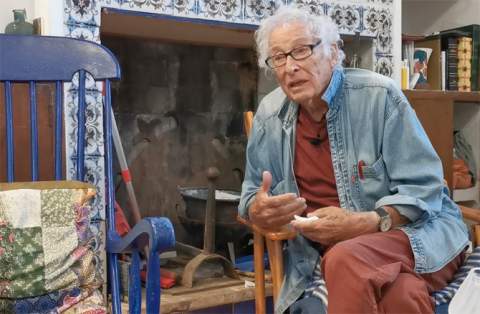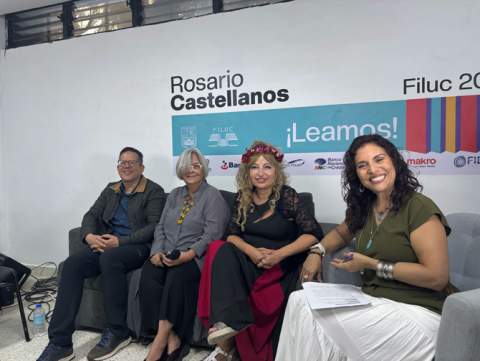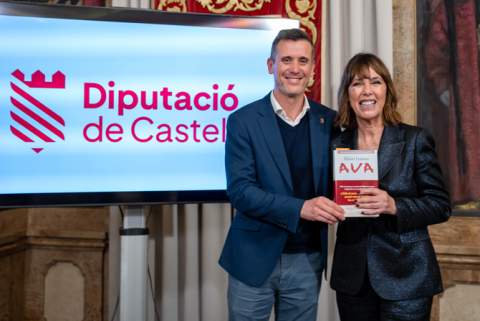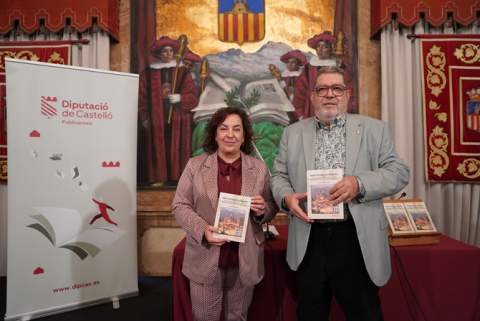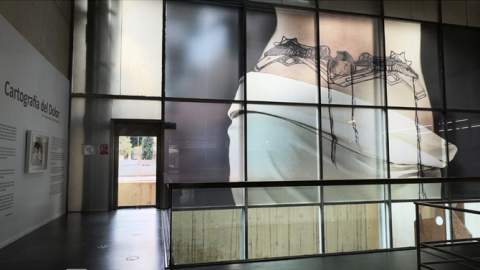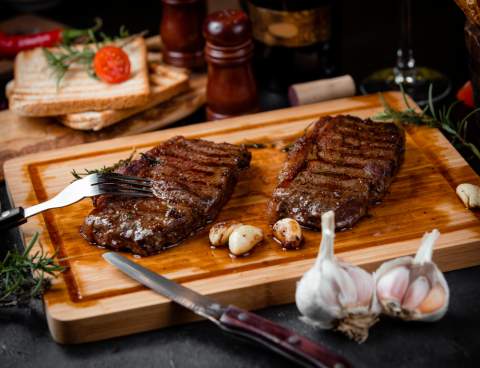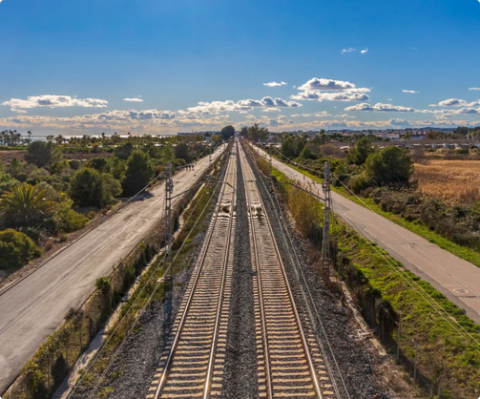The forensic anthropologist Paz Calduch described life 3,500 years before Christ through the study of the bones in the Cova Pastrana
On Saturday 17th June, the exhibition of finds in the Cova Pastana was opened in the Alcala de Xivert CESAL Museum Collection
 The forensic anthropologist and physicist Paz Calduch gave a talk entitled “La Cova Pastrana: cavitat funeraria” on Saturday 17th June in the Alcala de Xivert CESAL, where the exhibition was opened of remains of bones and funereal materials found over a long time in this cave.
The forensic anthropologist and physicist Paz Calduch gave a talk entitled “La Cova Pastrana: cavitat funeraria” on Saturday 17th June in the Alcala de Xivert CESAL, where the exhibition was opened of remains of bones and funereal materials found over a long time in this cave.
The Alcala de Xivert anthropologist announced some of the conclusions which have been drawn from the preliminary study of the bone remains recovered up to 2017 in the Cova Pastrana, dating from the Neolithic period, 3,500 years before Christ.
The event was presented by the Culture councillor, María Agut, who introduced Rafa Ronchera, the curator of the local Colección Museográfica, and the speaker, Paz Calduch.
Agut pointed out that the items which make up the local Colección Museográfica “are a live collection, to which are being added new findings and which shows new things every year”. In this way, the councillor explained that for the summer season, the collection on display would be the items found in the Cova Pastrana, and she was proud of the fact that a local resident should have chosen a site within her town for this study. The department head emphasised the importance of the Santa Llúcia, La Cova Pastrana and the Xivert Castle archaeological sites, celebrating the inclusion of the first of these in the Castelló Arqueológic archaeological heritage project which is being promoted by the Castellón Diputación.
In his speech, Rafa Ronchera explained how the material discovered in this cave, “in a terrible state” can now be used and studied by a specialist, and particularly by this resident of Alcala de Xivert
The forensic anthropologist and physicist, Paz Calduch, thanked the Alcala de Xivert-Alcossebre Council and Rafa Ronchera for the opportunity to investigate these remains, to contribute a vision of the life of these ancestral inhabitants, from the perspective of how they lived and in what conditions.
As an introduction, the investigator enumerated the different works which had been carried out in the Cova Pastrana, from the 19th century, the year 1969 and that carried out in the 80s.
Calduch explained that, according to the previous studies, it had been determined that the Cova Pastrana is a funereal cave, where the people who lived in the area carried out their burial rituals. The analysis process started with the recovery of all the bone remains, which were then separated into human and animal bones. This was followed by establishing a minimum number of individuals, by recounting the bones and teeth, to determine how many bodies were buried in the cave. Pathologists were able to work out the ages and sex, with the aim of obtaining a general picture of the population.
In this way, Paz Calduch described some of the techniques which were used to establish the age, from the state of development of the bones or their fusion, the sex was determined by the form of the pelvis or of the skull, as well as by the jaw. From all this it was possible to learn that, as a minimum, the bodies of a man and a woman had been buried in this cave, whilst a third set of remains could not be identified even to learn the sex.
The principal diseases suffered by the inhabitants in the region of the Cova Pastrana were anaemia through malnutrition, caries and mouth infections and degenerative osteoarthritis in the vertebrae. These pathologies tell us things such as the deficiencies in diet due possibly to periods of drought or adverse weather, a diet poor in proteins and principally vegetarian, and physical decline having moved on from being hunters and gatherers to becoming farmers, with the effort required to look after their crops having a negative impact on their state of health.
As significant data, the end of a sawn off and boiled left humerus was found, which could indicate that it was used to carry out some funeral ritual, to make a weapon or tool, or perhaps it was a case of cannibalism in a time of severe starvation.
Among the conclusions reached from the investigations, is the fact that this was a society which felt great respect for their dead, who were buried one at a time, but inside the same cavity, surrounded by a ritual which included giving them tools, equipment and weapons for their journey to another existence, placing the dead in a foetal position in the burials, as a symbol at the same time of a rebirth.
 The forensic anthropologist and physicist Paz Calduch gave a talk entitled “La Cova Pastrana: cavitat funeraria” on Saturday 17th June in the Alcala de Xivert CESAL, where the exhibition was opened of remains of bones and funereal materials found over a long time in this cave.
The forensic anthropologist and physicist Paz Calduch gave a talk entitled “La Cova Pastrana: cavitat funeraria” on Saturday 17th June in the Alcala de Xivert CESAL, where the exhibition was opened of remains of bones and funereal materials found over a long time in this cave.
The Alcala de Xivert anthropologist announced some of the conclusions which have been drawn from the preliminary study of the bone remains recovered up to 2017 in the Cova Pastrana, dating from the Neolithic period, 3,500 years before Christ.
The event was presented by the Culture councillor, María Agut, who introduced Rafa Ronchera, the curator of the local Colección Museográfica, and the speaker, Paz Calduch.
Agut pointed out that the items which make up the local Colección Museográfica “are a live collection, to which are being added new findings and which shows new things every year”. In this way, the councillor explained that for the summer season, the collection on display would be the items found in the Cova Pastrana, and she was proud of the fact that a local resident should have chosen a site within her town for this study. The department head emphasised the importance of the Santa Llúcia, La Cova Pastrana and the Xivert Castle archaeological sites, celebrating the inclusion of the first of these in the Castelló Arqueológic archaeological heritage project which is being promoted by the Castellón Diputación.
In his speech, Rafa Ronchera explained how the material discovered in this cave, “in a terrible state” can now be used and studied by a specialist, and particularly by this resident of Alcala de Xivert
The forensic anthropologist and physicist, Paz Calduch, thanked the Alcala de Xivert-Alcossebre Council and Rafa Ronchera for the opportunity to investigate these remains, to contribute a vision of the life of these ancestral inhabitants, from the perspective of how they lived and in what conditions.
As an introduction, the investigator enumerated the different works which had been carried out in the Cova Pastrana, from the 19th century, the year 1969 and that carried out in the 80s.
Calduch explained that, according to the previous studies, it had been determined that the Cova Pastrana is a funereal cave, where the people who lived in the area carried out their burial rituals. The analysis process started with the recovery of all the bone remains, which were then separated into human and animal bones. This was followed by establishing a minimum number of individuals, by recounting the bones and teeth, to determine how many bodies were buried in the cave. Pathologists were able to work out the ages and sex, with the aim of obtaining a general picture of the population.
In this way, Paz Calduch described some of the techniques which were used to establish the age, from the state of development of the bones or their fusion, the sex was determined by the form of the pelvis or of the skull, as well as by the jaw. From all this it was possible to learn that, as a minimum, the bodies of a man and a woman had been buried in this cave, whilst a third set of remains could not be identified even to learn the sex.
The principal diseases suffered by the inhabitants in the region of the Cova Pastrana were anaemia through malnutrition, caries and mouth infections and degenerative osteoarthritis in the vertebrae. These pathologies tell us things such as the deficiencies in diet due possibly to periods of drought or adverse weather, a diet poor in proteins and principally vegetarian, and physical decline having moved on from being hunters and gatherers to becoming farmers, with the effort required to look after their crops having a negative impact on their state of health.
As significant data, the end of a sawn off and boiled left humerus was found, which could indicate that it was used to carry out some funeral ritual, to make a weapon or tool, or perhaps it was a case of cannibalism in a time of severe starvation.
Among the conclusions reached from the investigations, is the fact that this was a society which felt great respect for their dead, who were buried one at a time, but inside the same cavity, surrounded by a ritual which included giving them tools, equipment and weapons for their journey to another existence, placing the dead in a foetal position in the burials, as a symbol at the same time of a rebirth.



